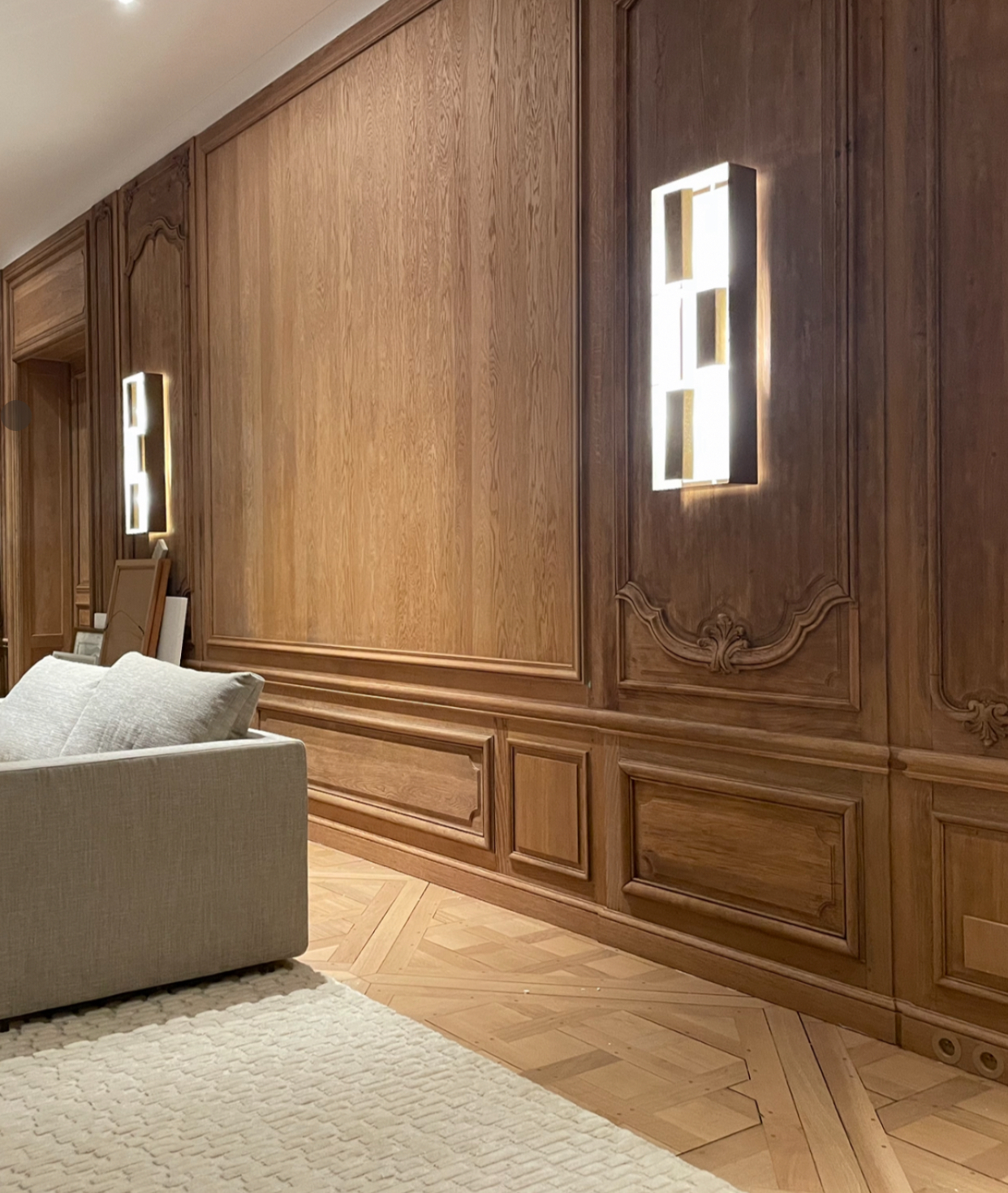Natural Light: 7 Elegant Ways to Enhance It in a High-End Renovated Interior
In the demanding field of high-end renovation, natural light does more than simply illuminate a space. It becomes a true architectural material, a source of emotion, a revealer of textures and volumes. When skillfully handled, it transforms interiors and enhances the beauty of noble materials—whether polished marble, solid wood, satin lacquer, or frosted glass.
In this article, we unveil 7 exclusive approaches to magnify natural light in a meticulously and elegantly renovated interior. These solutions, both technical and aesthetic, are designed for architects, interior designers, and homeowners who value a refined and coherent vision of living spaces.
1. Choose Custom Architectural Openings
The first step to enhancing natural light is rethinking the openings. In luxury renovation projects, every bay window, arched opening, or skylight should be treated as an aesthetic signature.
- XXL bay windows in black aluminum or brushed brass: create a visual dialogue between inside and out.
- Full-height windows: perfect for amplifying verticality in Haussmann-style or contemporary volumes.
- Custom glazed partitions: workshop-style or smoked glass panels delineate spaces without breaking the flow of light.
💡 Inspiration: Architect-designed coastal villas often use panoramic glazing to blur the lines between interior and nature.
2. Work with Indirect Light and Noble Materials
Materials in a high-end renovation play a crucial role in subtly distributing light.
- Polished marble or honed travertine: gently reflects light while preserving mineral texture.
- Light-toned oiled wood floors: ideal for capturing morning light without excessive shine.
- Custom mirrors: framed in metal or integrated into wall panels, they create sophisticated reflections without vulgarity.
💎 Tip: Favor matte or satin finishes to avoid glare while optimizing light diffusion.
3. Create Light Axes in Interior Architecture
Top-tier projects often involve structural thinking around light:
- Cross-through perspectives: removing load-bearing walls or replacing them with glass walls creates a seamless light flow.
- Openwork staircases: made of metal, wood, or glass, they allow light to pass between floors.
- Open or double-height ceilings: ideal for installing skylights or overhead glazing in central rooms.
4. Incorporate Designer Skylights
Skylights are often seen as purely technical, but in a luxurious renovation, they become architectural features.
- Flush-framed overhead skylights: blend seamlessly into ceilings for pure natural diffusion.
- Glass domes: perfect for entryways or round living rooms, offering central natural lighting.
- Motorized skylights with dimmable glass: allow light intensity to be adjusted throughout the day.
👉 A discreet but effective high-tech touch for visual and thermal comfort.
5. Use a Carefully Curated Architectural Color Palette
Colors in high-end renovations are rarely chosen randomly. They actively contribute to showcasing natural light:
- Stone, linen, or clay tones: create a warm and soothing ambiance.
- Lime-based plasters or Venetian stuccos: diffuse light with subtle depth and rich texture.
- Strategically placed dark walls: a matte black or midnight blue wall can beautifully frame and enhance natural light.
6. Discreetly Support Natural Light with Artificial Lighting
Natural light reigns supreme, but its effect is amplified with well-thought-out artificial lighting.
- Adjustable wall sconces: to gently brighten naturally darker areas.
- Recessed LED strips: along baseboards or under floating furniture, they extend the natural effect into the evening.
- Light, transparent pendant lights: ensure they don’t block daylight sources.
✦ Bonus: Consider smart lighting systems to automate transitions between natural and artificial lighting based on time and ambiance.
7. Harmonize Outdoor Spaces to Guide the Light
The immediate surroundings directly influence the quality of indoor light.
- Light-colored terraces and limestone paving: reflect light toward bay windows.
- Rock gardens or green roofs: soften harsh contrasts and promote a gentle, natural atmosphere.
- Architectural sunshades or wooden screens: filter light and create refined, controlled shadow patterns.
To Go Further: Inspiring References
- Le studio Joseph Dirand Architecture – pour leur maîtrise des volumes et de la lumière naturelle dans les hôtels particuliers parisiens.
- Tadao Ando Architect & Associates – renowned for their interplay of shadow and light in raw concrete.
- Fakro France – innovative solutions for skylights and glass roofs in high-end renovations
Frequently Asked Questions (FAQ)
How important is natural light in a luxury renovation project?
It enhances architecture, improves quality of life, reduces the need for artificial lighting, and elevates noble materials.
Do I need to enlarge windows to get more natural light?
Not always. Interior glass walls, mirrors, or skylights can amplify brightness without major structural changes.
Should dark materials be avoided?
No—if used strategically. A well-placed dark wall can create striking contrast and showcase light beautifully.
In Summary…
In a high-end renovated interior, natural light becomes a raw material to sculpt. Through thoughtful architectural choices, exceptional materials, and refined aesthetics, it reveals the elegance of spaces and elevates every detail. Whether you're an architect, designer, or discerning homeowner, always think of light as a vector of emotion and discreet luxury.
For more information on luxury renovations and project management in Paris, feel free to check out our other articles and discover our most inspiring projects .

